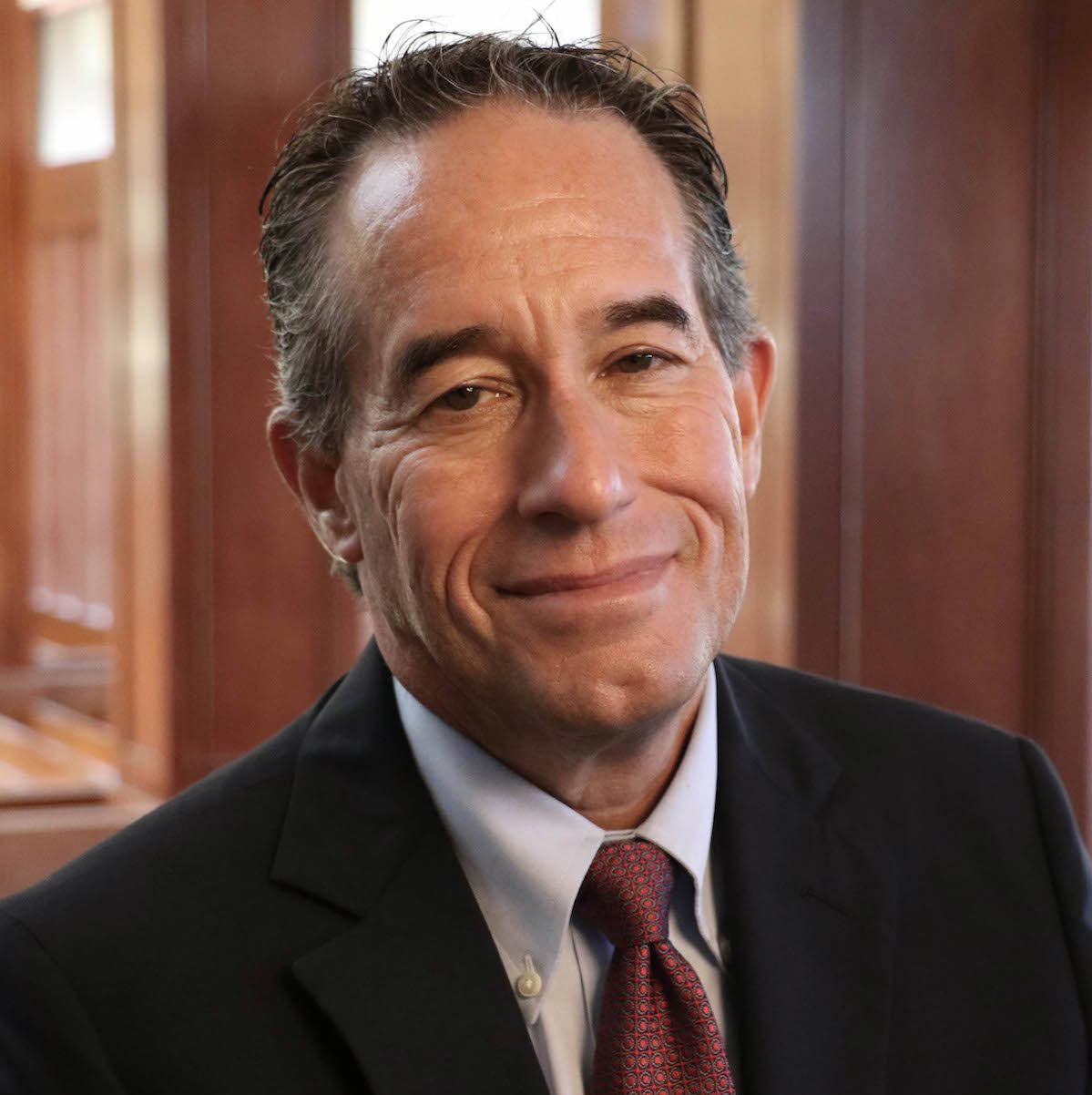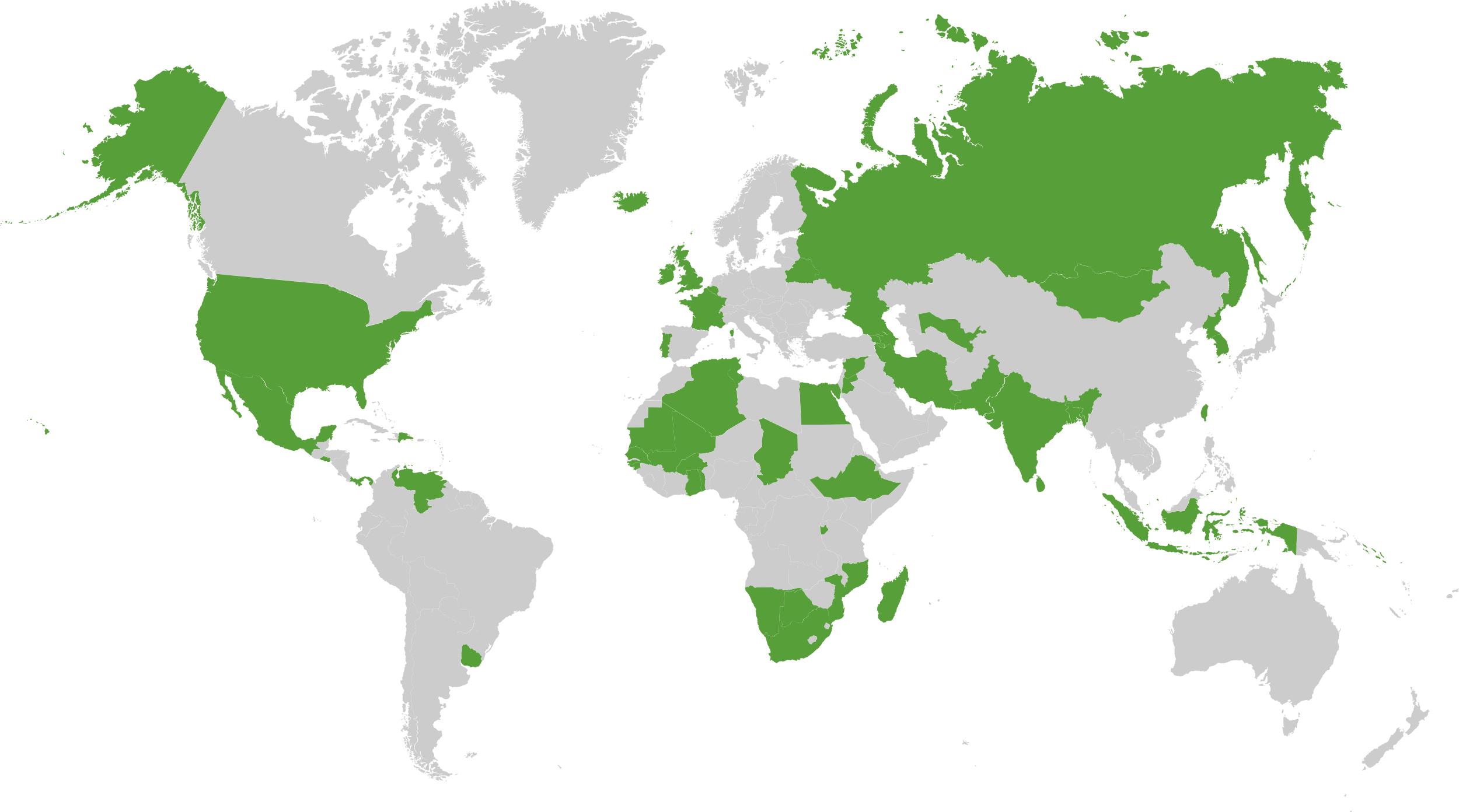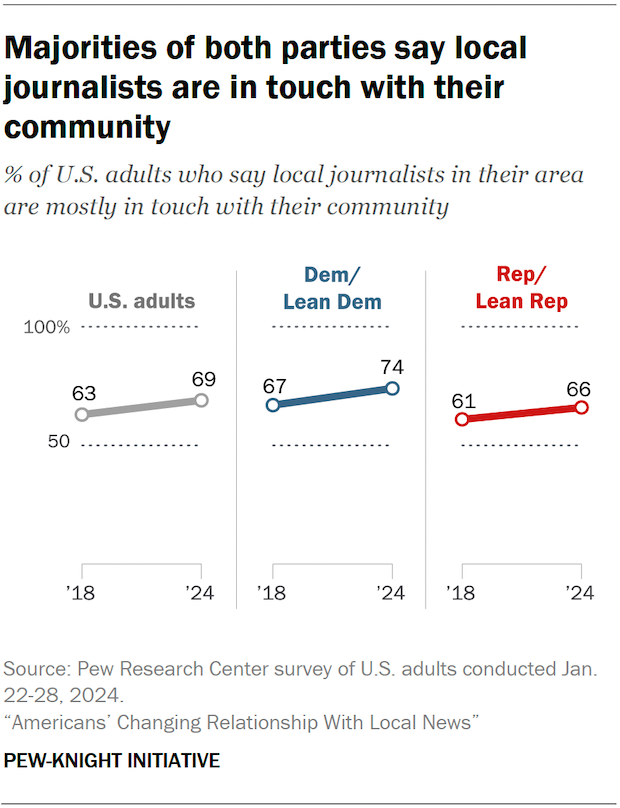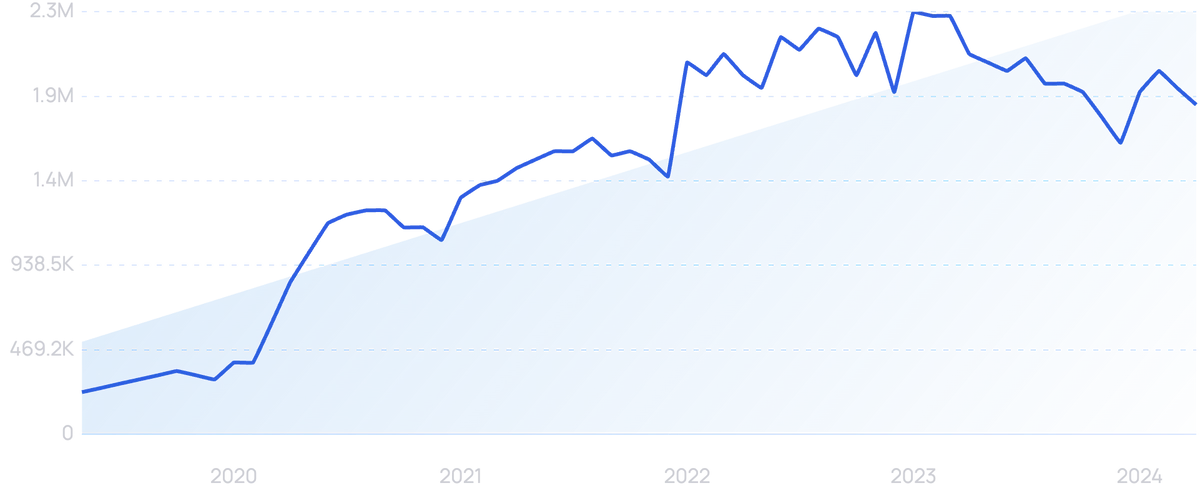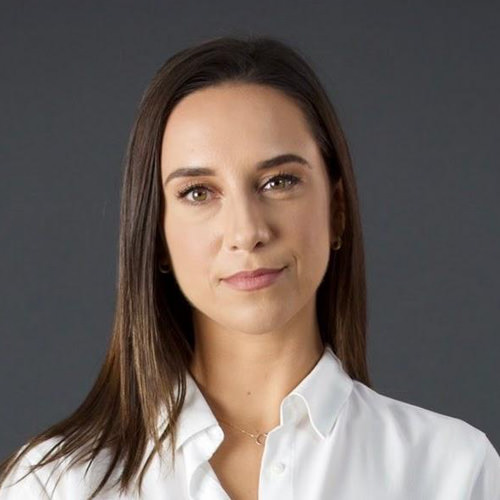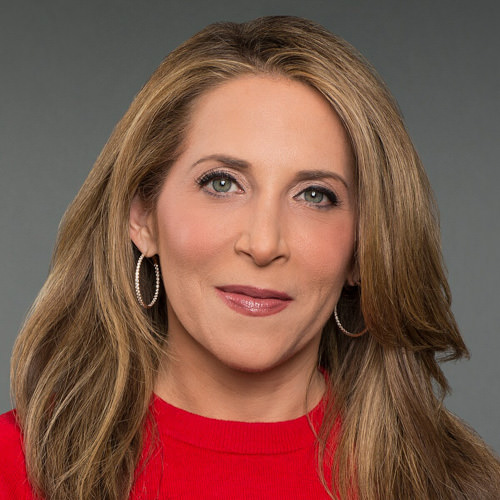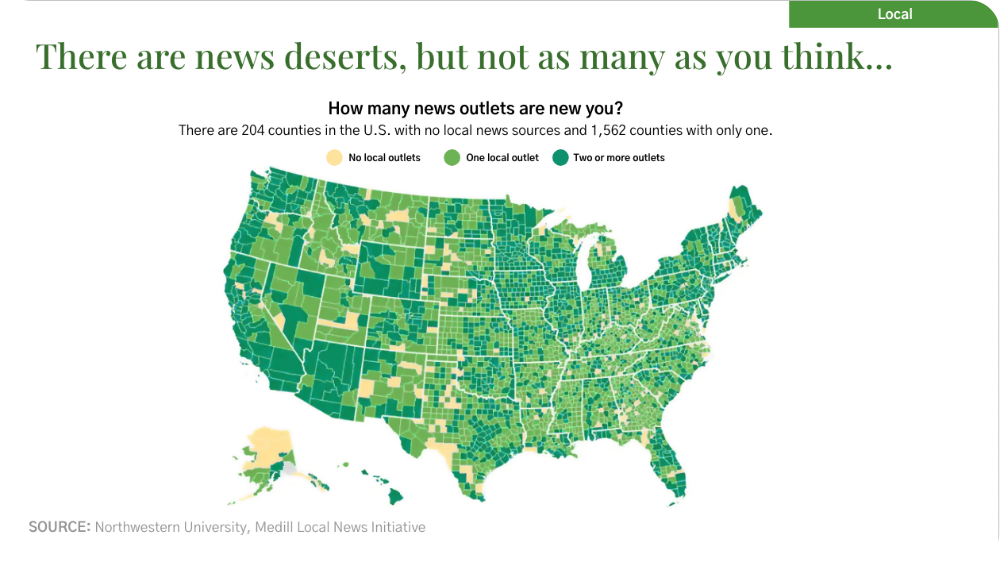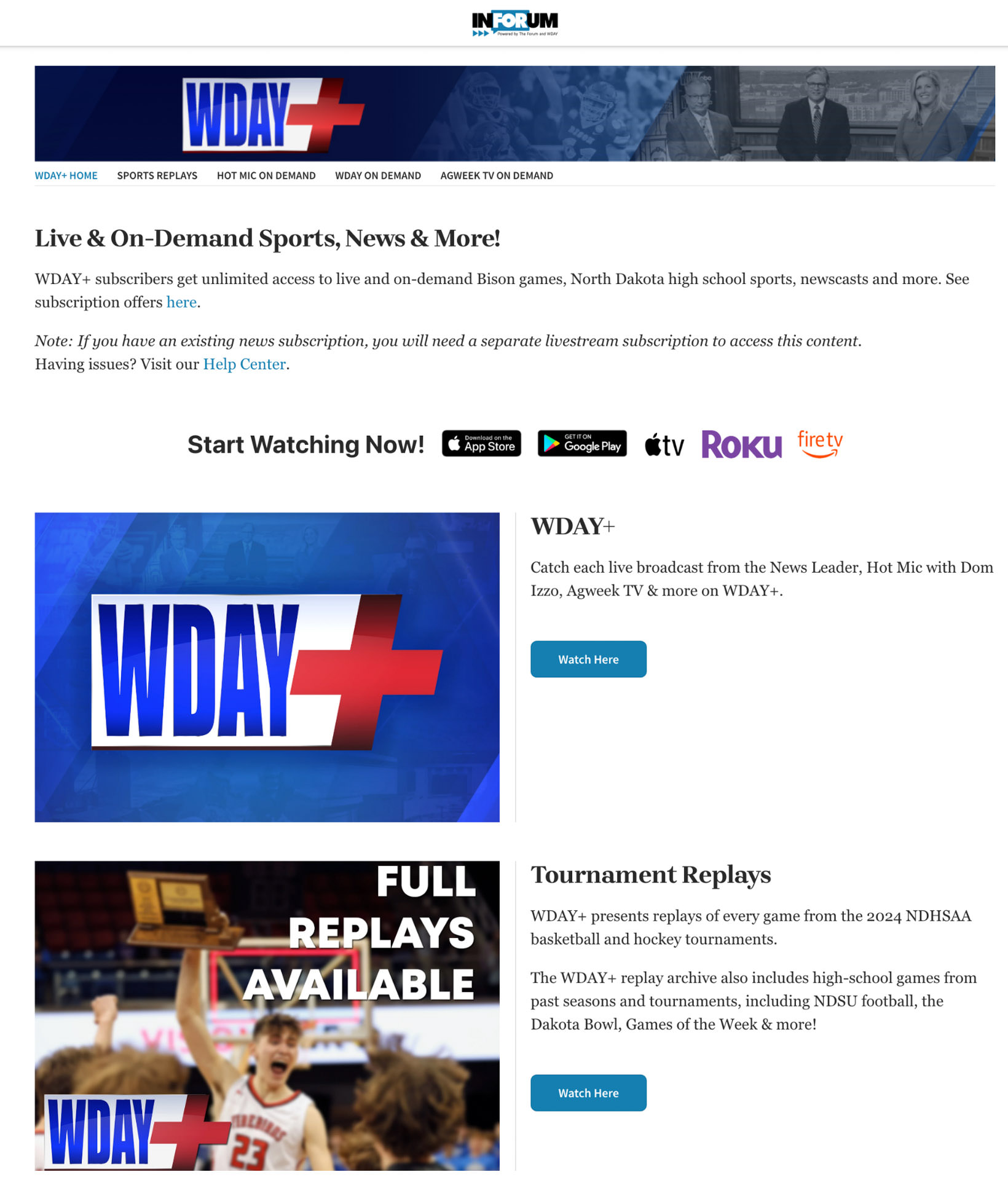Introduction: A wider Poynt of view
The digital news site The Baltimore Banner celebrated its two-year anniversary this spring by announcing it was investing more in education coverage, met its subscription goals and had a newsroom head count of 80 and growing. That makes it larger than its competitor, the legendary metro The Baltimore Sun. Across the country, at the 133-year-old Seattle Times, total paid circulation surpassed the previous record set in 1980.
While many people complain of “news fatigue,” overall consumption remains steady — with eight in 10 Americans getting news on their digital devices daily or sometimes, studies from the Pew Research Center show. Pew research found that more people are following election news more closely than they were at the same time four years ago.
Four small or nonprofit newsrooms — Invisible Institute, Lookout Santa Cruz, Mississippi Today and the Better Government Association — won Pulitzer Prizes for local news coverage in the past three years. Another news site, AL.com in Alabama, converted from a print/digital hybrid to digital-only and itself won two Pulitzer Prizes.
Public radio and TV stations in 74 local markets embarked on a mission to expand their digital audiences and diversify their reach beyond drive time and evening over-the-airways programs. It worked. Now the Corporation for Public Broadcasting is expanding the initiative, in partnership with the Poynter Institute, to 225 markets.
And this summer, social media content creators and influencers were credentialed as press to share stories from the Democratic National Convention. That‘s significant but not surprising — a third of Americans say they get their news from social media platforms such as TikTok and YouTube.
Neither boom nor doom
Do these examples suggest the state of journalism is comfortably robust and that the news media industry has conquered the existential crisis of audience loyalty, technological disruption and financial sustainability? No.
But doom-and-gloom narratives that cherry pick stories of vulture capitalists, job loss statistics and print closures are incomplete or out of date, painting an inaccurate picture of a news and information ecosystem on life support.
OnPoynt aims to offer a forward-minded look at the state of journalism and the news industry that propels the story by considering trends related to creative product ideas, audience growth strategies and traction around revenue, artificial intelligence and innovation.
For 50 years, the nonprofit Poynter Institute has elevated the craft and ethics of journalism. To those core disciplines, Poynter has now expanded to arenas of news enterprise leadership, digital transformation, the battle against misinformation, and media analysis — all of which inform Poynter’s take on the future and represent our own path toward financial and journalistic sustainability.
OnPoynt is not a naive spin away from marketplace realities. Quite the reverse. Decades ago, market realities explained how newspapers, for example, dominated public access to news and information — allowing owners of papers to both inform and make substantial profits. The profound change is undeniable and financially upending.
But we argue that it's time to stop conflating the flailing response of news and information providers to those fundamental market shifts with a loss of faith in the key role of independent journalism to functioning democracy. Indeed, we should stop scolding audiences as uninterested in democracy just because they may no longer choose to pay for news products that they don’t find relevant to their lives or easy to access.
Journalism on the rise
Those market shifts, along with powerful technology, have provided people more power to choose what information they get and how they get it. The choices remain overwhelming, and the news industry’s struggle to invest in user experience and monetize its content has diminished its standing. But that didn’t alter this essential truth: High quality journalism that informs and helps people make choices for better lives is as crucially important today as ever — and is finding business success. So, that side of the story deserves a greater share of the airtime.
As the industry navigates these complications, it is imperative for news organizations to adapt, innovate and redefine their value. By embracing new formats, fostering community engagement and delivering compelling storytelling that resonates with diverse and distinct audiences, journalism reinvigorates its connection with the people it serves.
Our Poynt of view: More news and information creators than ever before now seek to use facts, know-how and engaging story forms to help audiences make sense of the world. That is happening — much more than you hear about. The examples above are not “glimmers” or hidden gems. Instead, they are part of the call to action in this report to eschew macro-narratives of despair and decline in favor of precise tales of success and deeper review of the lessons from media research and specific market experiments.
Such stories, along with those of the struggles, serve as beacons to those who hope to make a difference through journalism.

